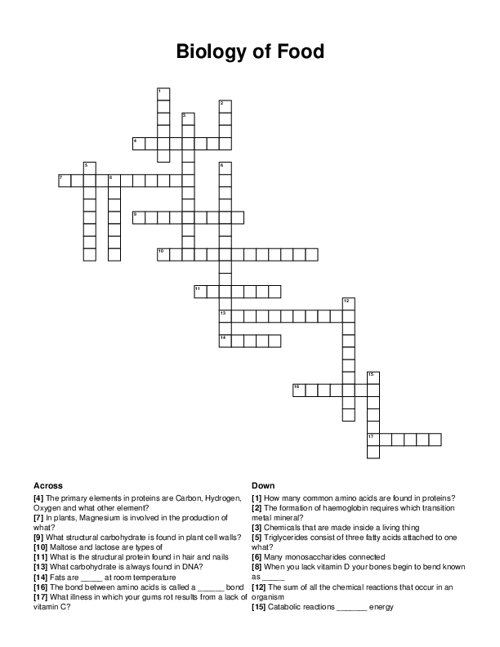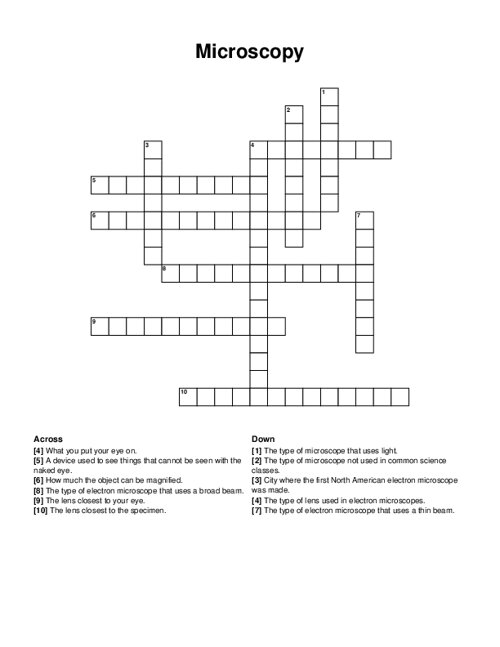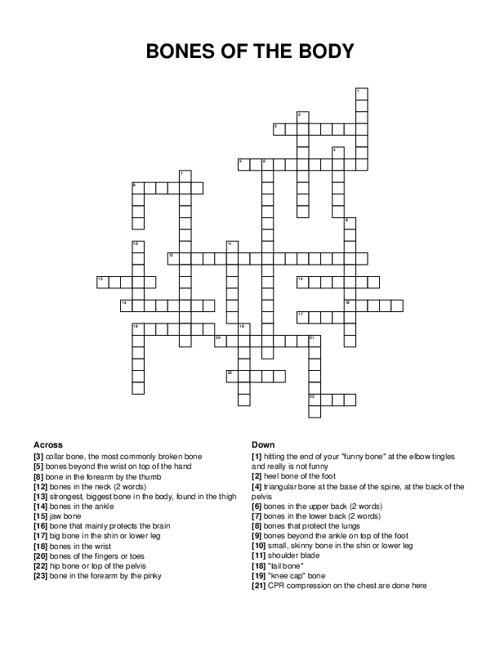Eukaryotic Cell Components Crossword Puzzle
Download and print this Eukaryotic Cell Components crossword puzzle.
Related puzzles:
QUESTIONS LIST:
- cell membrane : this is a thin covering that surrounds all cells and controls the flow of materials in and out of a cell.
- cytoplasm : this jelly-like substance fills the inside of the cell and contains organelles and other life-supporting materials.
- organelle : this is a specialized cell part that carries out a specific function that is necessary to keep the cell alive.
- eukaryotic : the organelles in this type of cell are surrounded by a membrane.
- prokaryotic : this type of cell does not have membrane-bound organelles.
- mitochondrion : in this type of organelle, a reaction called cellular respiration occurs, where glucose is transformed into useable energy.
- atp : usable energy can be easily released from this molecule, which is made in the mitochondria.
- ribosomes : these small organelles have no membrane. they can be found in the cytoplasm or on the rer, and they are where proteins are made.
- vesicles : these membrane-bound sacs form off the ends of the er, and transport newly made proteins to the golgi body.
- golgi body : this organelle is a series of membrane-covered channels that sorts and packages proteins for transport out of the cell.
- vacuoles : these membrane-bound storage containers are found in animal cells (small) and plant cells (large and small).
- starch : this is stored in small vacuoles in plant cells.
- water : this is stored in large vacuoles in plant cells.
- lysosomes : these spherical-shaped organelles are vesicles that contain digestive enzymes.
- nucleus : this organelle controls all the activities of all the other cell organelles.
- nuclear membrane : this is similar in structure to the cell membrane, but it surrounds the nucleus.
- nucleolus : this membrane-free organelle is found within the nucleus and functions to make ribosomes.
- nuclear pores : these openings in the nuclear membrane only allow certain things in and out of the nucleus.
- centrioles : these cylindrical organelles that are found in animal cells (and in some plant cells) play a role in mitosis.
- cell wall : plant cells have this tough, rigid structure that surrounds the cell membrane and gives the cell support and protection.
- chloroplasts : these specialized organelles in plant cells trap energy from the sun and make glucose, using photosynthesis.
- ser : these membrane-covered channels do not contain ribosomes, but they produce steroid hormones.
- rer : these membrane-covered channels contain ribosomes.





